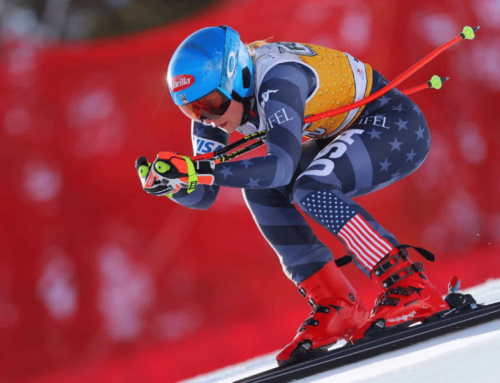Behind the Gold: Tears on a Storybook Night in Lake Placid
As an athletic coach, you learn that it’s OK to cry. Coaches have a lonely job, laboring hours on end to help young athletes achieve their dreams. On a cold January Adirondack night, one of those dreams came true. And there were hard-earned tears in the aerials finish area at the Olympic village of Lake Placid.
Mac Bohonnon is only 19. But as he stood atop the hill at the Olympic Jumping Complex, he carried the weight of a generation. Flashes of memories swirled through his sub-conscious — the time he first made the trek from Madison, Conn., with his family; that debut backflip into the pool under the watchful eye of coach Nick Preston (yes, head-first); the summer that Olympic champion Eric Bergoust took him on as a project and got his career on track; and the day he foreran as Ashley Caldwell won her first World Cup in Placid, her teammates carrying her on their shoulders to the podium.
Tonight, though, it was his turn.
Freestyle aerialists are a strange breed. Let’s face it: You have to be at least a little bit crazy to hurtle yourself 65 feet above the snow doing three flips with four or five twists.
The ‘80s and ‘90s were a heyday for American aerialists. Trace “The Ace” Worthington and Kris “Fuzz” Feddersen took the torch from their forefathers and ushered aerials into the Olympics. Bergoust and Nikki Stone took it a step farther, sweeping gold at the 1998 Olympics in Nagano. A decade later, Jeret “Speedy” Peterson brought a nouveau twist — five of them, actually — to the sport with his trademark Hurricane, which won him Olympic silver and a record high score that still stands.
But a decade ago, the world watched a new renaissance in aerials in the form of a Chinese juggernaut. To combat it, the U.S. Freestyle Ski Team started its Elite Aerials Development Program (EADP) in 2008 to bring aspiring young gymnasts and acrobats into freestyle skiing.
It’s working.
New athletes are emerging from the U.S., including from the Adirondack training ground. “Some of my fondest memories ever originate in Lake Placid,” said Bohonnon.
When you grow up in sport, you grow up with friends and teammates — people like Caldwell, Jonathan Lillis, Nevin Brown, Kiley McKinnon, Alex Bowen and more. In January, McKinnon and Bowen took silver at the World Championships. In December, Bohonnon and McKinnon were on the podium in Beijing.
“It’s unreal to think that our entire crew made it to where we are at today,” said Bohonnon, “World Cup podiums and all!”
One of the first things that strikes you quickly about Mac is his humility. Ask him about his Lake Placid win. He won’t start out talking about the flawless execution of his double-in triple flip. No, first thing he’ll talk about is the work the coaches did to give him the perfect starting spot to have the ideal speed to execute the trick.
“My coaches absolutely killed it,” he said. “They nailed the conditions — I didn’t have to worry about that at all. I can’t thank the coaches enough for allowing me to do that.”
As he stepped off the podium to celebrate his own win, he kept his eyes focused as teammate Kiley McKinnon donned the yellow bib. A friend from Connecticut, Bohonnon had introduced her to the EADP program. She took a chance, and it’s paid off. That same night, she became the first American woman to lead the World Cup in 17 years.
Freestyle skiing wasn’t much on the radar back at the time of the 1980 Olympics in Lake Placid. Today, it’s part of its heart and soul. There was a lot of love in the finish the night of Jan. 30 — family, friends, fans and coaches — all sharing in a young man’s dream.
“Without Lake Placid, my aerials career wouldn’t exist,” said Bohonnon. “If I was given the chance to write the script myself, it would go exactly how this weekend went. I couldn’t dream of a better place to win my first World Cup.”





















